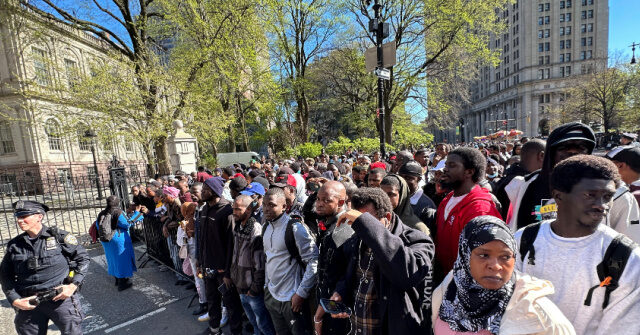The heated discourse following JD Vance’s remarks during the Vice-Presidential debate has spotlighted the contentious issue of migration and its impact on housing prices in America. Vance asserted that the influx of millions of illegal immigrants has significantly contributed to rising housing costs for middle-class Americans, a claim that has ignited backlash and distortion from establishment media. Critics have largely attempted to downplay the connection between migration and housing prices, often shifting the narrative to focus on other economic factors. This obfuscation serves as a defensive maneuver for Democrats, shielding them from Vance’s allegations that the Biden administration’s mass migration policies are exacerbating housing affordability issues.
Economist Paul Krugman’s derisive comments following Vance’s assertions illustrate an attempt by some media figures to simplify the argument into a caricature—labeling Vance as anti-immigrant while suggesting that housing challenges are merely a consequence of limited availability. By undermining Vance’s position without adequately addressing the underlying issue, media outlets like the New York Times inadvertently confirm Vance’s claim that migration plays a significant role in housing shortages, albeit less than other factors. Nevertheless, Vance’s specific assertion invites scrutiny of how policy decisions directly relate to shifts in housing demand and affordability, illuminating a complex web of socio-economic realities.
To contextualize Vance’s claim, one must consider the substantial number of migrants the Biden administration has allowed into the U.S. since 2021. Approximately 10 million have entered through various means, saturating specific markets and housing demand in cities and communities across the nation. Outlets like the Los Angeles Times and Sacramento Bee acknowledged Vance’s recognition of these changes yet pivoted the discussion toward an overarching housing shortage narrative, suggesting that the government’s sanctioned migration has had minimal impact. This denial demonstrates an unwillingness to confront the intersections between migrant influx and housing costs directly, as evidenced by the dc-based Axios, which highlighted other economic drivers but implicitly accepted that migration contributes to the larger housing crisis.
Moreover, anecdotal evidence from urban officials acknowledges the strain that migration places on housing resources. Individuals in positions of authority, such as city managers, articulate how populations compete against one another for dwindling housing stock, which contributes to societal tension and fosters xenophobic sentiments. While outlets like The Washington Post concede that migration influences housing prices, they downplay its significance compared to other economic drivers, revealing an underlying discomfort with confronting the real consequences of current immigration policies. This “more significant” framing serves as an implicit acknowledgment that migration does affect prices, even when not at the forefront of discussions.
Opposition narratives have also included claims that migrants do not compete with middle-class Americans for housing, often suggesting that their participation in the rental market functions independently of the broader home purchasing landscape. Critics argue that rising rents correlate with demand primarily from higher-income households and investors converting properties into multi-family rentals. However, the economic reality shows that increased competition can drive rents and home prices up—particularly evident in tight housing markets where the influx of new residents leads to upward pressure on costs. As highlighted by Moody’s Analytics, significant demographic shifts can lead to an overall increase in demand, raising both housing prices and rents.
Moreover, empirical studies bolster the notion that immigration directly affects housing prices and market dynamics, noting that increased numbers of immigrants correlate with heightened rent and housing costs. This established trend challenges narratives that dismiss immigration’s impact, revealing the multifaceted nature of housing economics. Historical examples from other countries, such as Canada and Spain, further demonstrate that high levels of immigration can precipitate significant housing price increases, making home ownership unattainable for younger generations. As such, the ongoing dialogue surrounding Vance’s comments reveals not only complex truths about migration and housing but also highlights the political ramifications as communities grapple with the implications of long-standing immigration policies.

